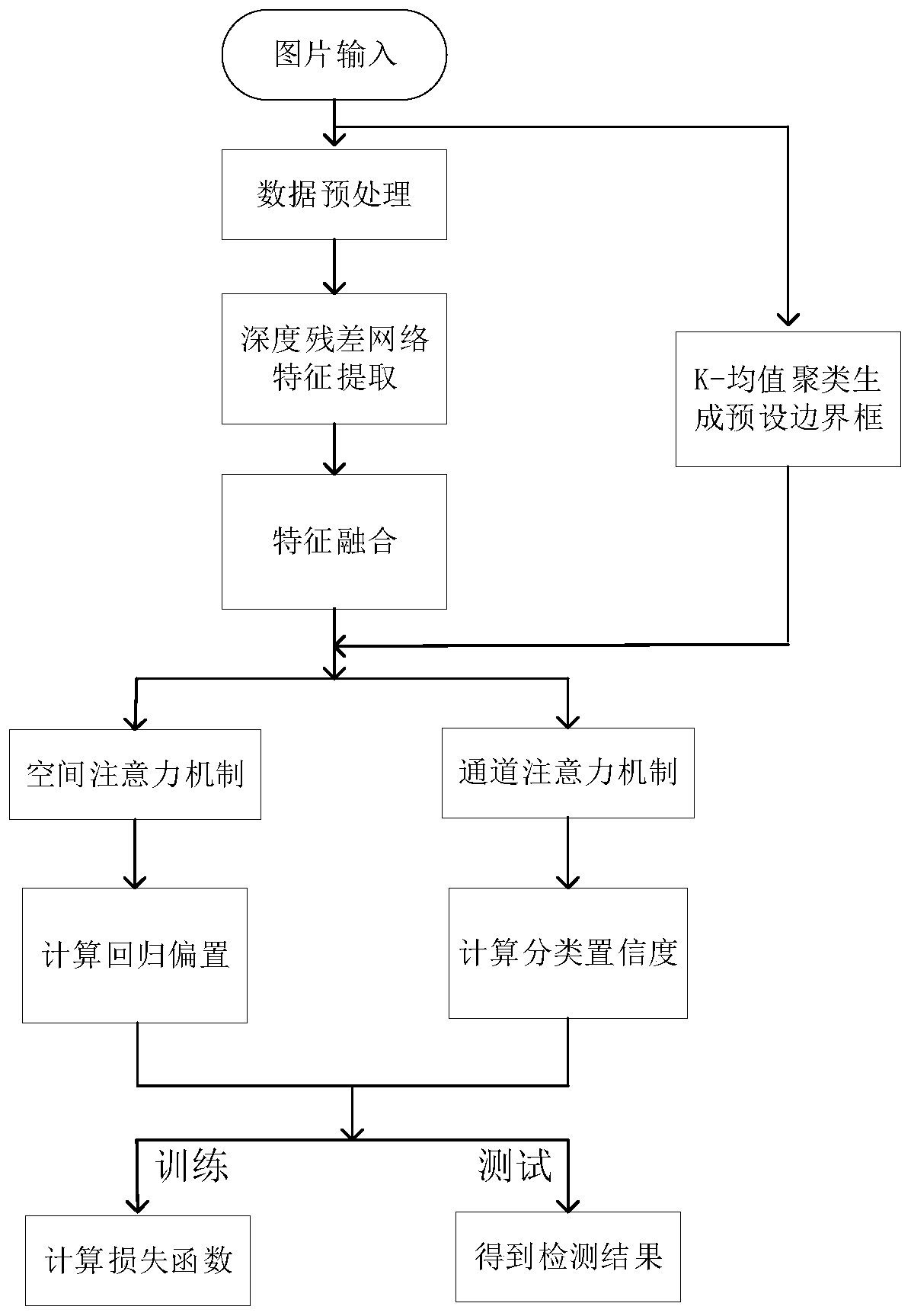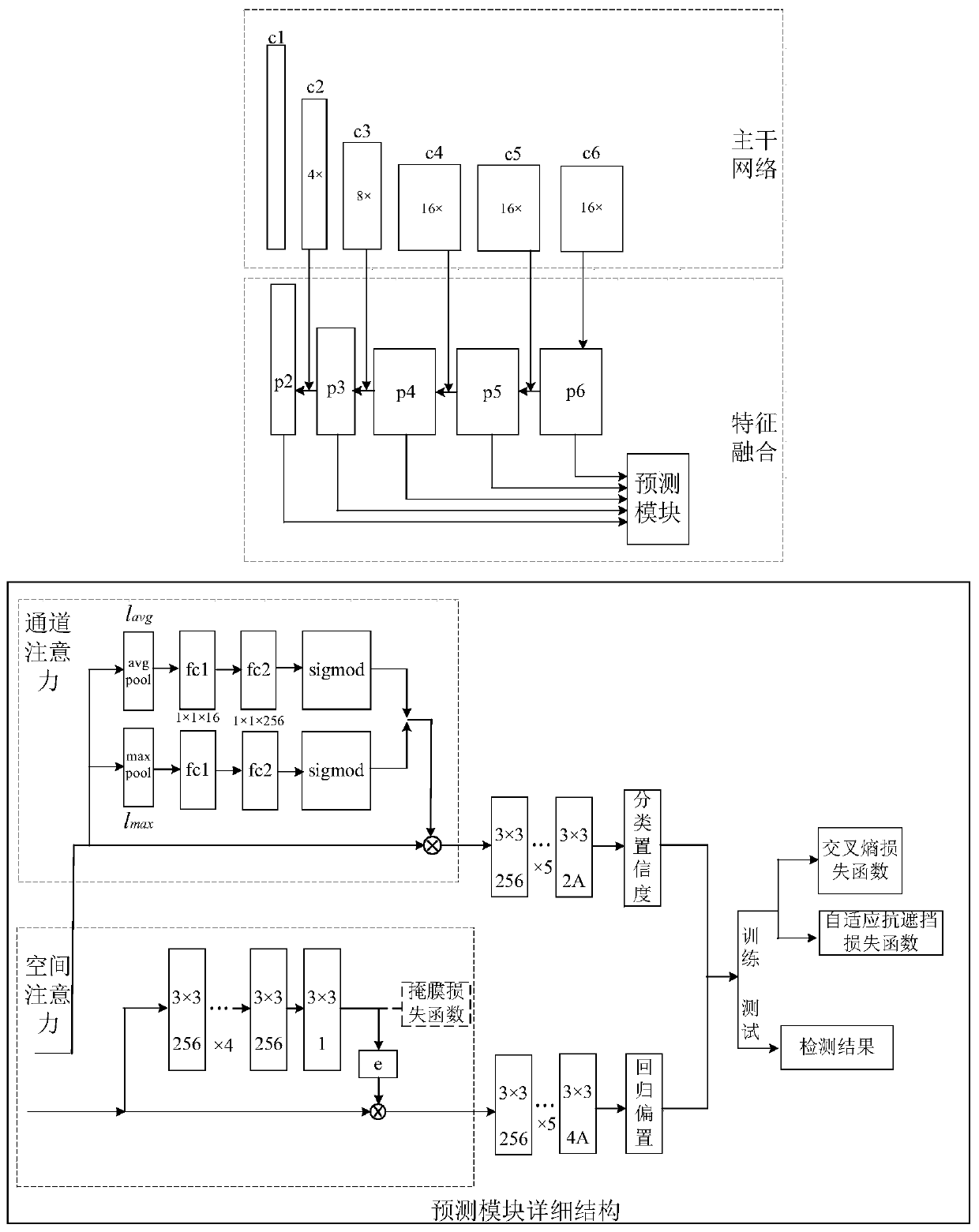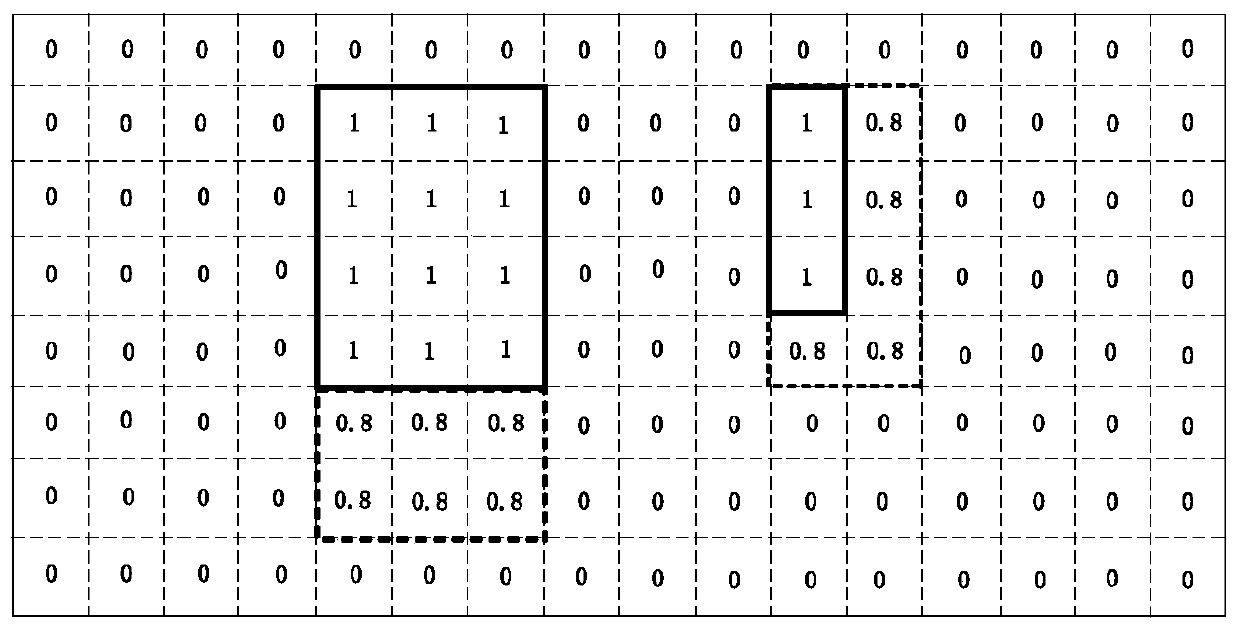Anti-occlusion pedestrian detection method based on attention mechanism
A pedestrian detection and attention technology, which is applied in the fields of deep learning, pattern recognition, and computer vision, can solve the problem that the neural network cannot autonomously distinguish the importance of different features, affects the performance of detection, and degrades the detection performance, so as to alleviate the local characteristics of pedestrians. Missing, noise-mitigating, high-res effects
- Summary
- Abstract
- Description
- Claims
- Application Information
AI Technical Summary
Problems solved by technology
Method used
Image
Examples
Embodiment Construction
[0039] The technical solutions and beneficial effects of the present invention will be described in detail below in conjunction with the accompanying drawings.
[0040] Such as figure 1 As shown, the present invention provides an anti-occlusion pedestrian detection method based on the attention mechanism, and the specific steps are as follows:
[0041] Step 1: Firstly, the preprocessing of the pedestrian image data adopts general image scaling, horizontal flipping, random translation and other data enhancement methods to expand the diversity of data. In addition, it also includes a cropping method specially designed for occluded pedestrians. The specific method is: for each picture, 5 pedestrians with an occlusion rate less than 80% are randomly selected, bounded by the center point of their bounding box, and one of the upper, lower, left, and right sides is randomly selected For cropping, the cropping ratio is not greater than 50% of the width and height, and then padding (f...
PUM
 Login to View More
Login to View More Abstract
Description
Claims
Application Information
 Login to View More
Login to View More - R&D
- Intellectual Property
- Life Sciences
- Materials
- Tech Scout
- Unparalleled Data Quality
- Higher Quality Content
- 60% Fewer Hallucinations
Browse by: Latest US Patents, China's latest patents, Technical Efficacy Thesaurus, Application Domain, Technology Topic, Popular Technical Reports.
© 2025 PatSnap. All rights reserved.Legal|Privacy policy|Modern Slavery Act Transparency Statement|Sitemap|About US| Contact US: help@patsnap.com



